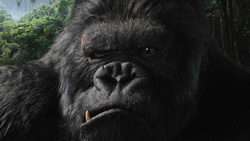Scientist: Kong Lives!

Cinematically, at least, King Kong crashes into the American imagination about every three decades, and he's wreaking havoc again in theaters starting this week. Gregg Mitman, professor of the history of science and medical history at the University of Wisconsin-Madison, says that the first King Kong film was inspired by an actual scientific expedition.
"Elements of the 1933 Kong movie are based on the 1926 real-life expedition of William Douglas Burden, a trustee of the American Museum of Natural History," says Mitman, an expert on how animals are portrayed in popular culture.
"Burden traveled to Indonesia to film and capture the Komodo dragon, which he thought was the closest living relative of dinosaurs," he says. "When Burden brought back two live Komodo specimens and housed them in captivity in the Bronx Zoo, they died. Meridan Cooper, producer of the 1933 film version of Kong, wrote at the time, 'I immediately thought of doing the same thing with a giant gorilla.'"
The same correspondence indicates that Burden attributed the Komodo dragon's death to civilization. "This is why Cooper chose the Empire State Building and modern airplanes to kill off Kong. They were fitting symbols of civilization and the machine age that many feared were destroying nature," Mitman says.
He adds that the film's enduring appeal (the current one adds to the 1976 version and the 1933 classic original) might be linked to the restorative properties of an unspoiled, natural landscape.
"The explorers believed that through hunting, with the camera or the gun in remote regions of the earth, following in the footsteps of Teddy Roosevelt, that their own manhood, threatened by material comfort and moral complacency, could be restored," Mitman says. "In the wilds of nature, the trappings of civilization might be shed, one's character laid bare and a more authentic self found."
Source: University of Wisconsin


















